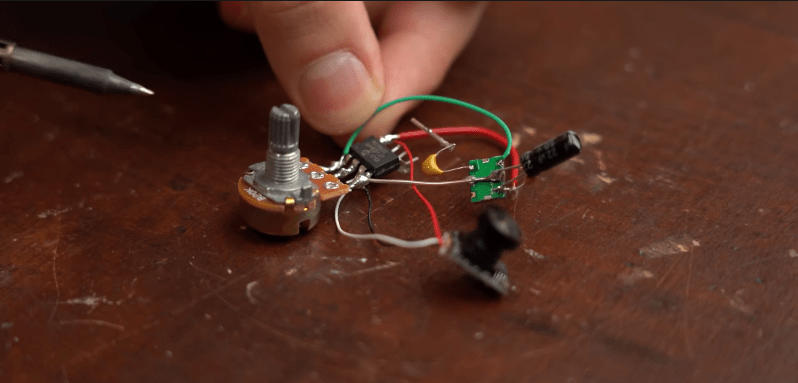In today’s world, GPS and other GNSS systems play a pivotal role in our daily lives, from guiding ships to facilitating financial transactions. However, the increasing reliance on these systems also poses significant risks. Jamming and spoofing attacks can cause widespread disruption and pose a serious threat to public safety. That’s why spectrum monitoring is crucial. It enables us to detect and locate jammers, and even prevent attacks with advanced anti-jamming and anti-spoofing technologies. By staying vigilant and leveraging these technologies, we can ensure the reliability and safety of our GNSS systems, safeguarding our way of life.
GPS Jamming Explained

GPS jamming is not just a nuisance; it can have serious consequences. In London, for instance, some taxi and heavy goods vehicle (HGV) drivers have been known to use jammers to evade rules on maximum driving hours or prevent employers from tracking their movements. However, the use of GPS jamming extends beyond these localized examples and has been employed for more sinister purposes worldwide. In 2016, South Korea was the target of a major GPS jamming campaign from North Korea, which disrupted ship and aircraft navigation, highlighting the potential for national security threats posed by this technology.
As the world moves towards 5G systems, the likelihood of interference with GPS signals increases. GPS operates in frequencies that overlap with those being used by 5G systems, meaning that as 5G networks expand, the potential for interference and jamming also rises. This is a significant concern for both individuals and businesses that rely on GPS for navigation, location tracking, and other critical functions.
To combat this escalating issue, spectrum monitoring has become a crucial tool. Our London campaign has demonstrated the effectiveness of this approach, allowing GPS jammers to be detected and located using mobile direction finding systems. By analyzing frequency spectra, we can determine the duration of interference and signal type, providing valuable insights into whether the jamming is accidental or deliberate. This information enables us to warn those responsible for unintentional jamming and take legal action against malicious attackers, quickly resolving the disruption and danger caused by GPS jamming while also serving as a deterrent to future attacks.
CRFS’s RFeye receivers are designed with exceptional noise performance, enabling detection and location over larger areas. Automation features minimize human intervention and trigger alarms upon detection of jamming activity. Additionally, our GPS holdover module ensures accurate timing synchronization between receivers, even in the absence of a GPS signal due to jamming or poor reception. High-performance receiver boards can be integrated into 3rd party anti-jamming and anti-spoofing systems, providing proactive protection for critical applications that rely on GPS location and timing services.
GPS Hacking Explained
Basic Forms of
The simplest form of GPS spoofing, often referred to as denial-of-service spoofing, involves sending blatantly false location information to the GPS receiver. This can result in the receiver being misled into believing it is located in a completely different place, such as a ship being told it is on land instead of at sea. While this form of spoofing is immediately recognizable to the user, it effectively renders the GPS system unusable for its intended purpose.
Advanced Forms of
A more sophisticated and stealthy variant of GPS spoofing is deception spoofing. This technique involves initially providing the GPS receiver with accurate location information to evade detection. Gradually, the spoofed signals are altered to manipulate the receiver’s perception of its location. This can lead to vessels being deliberately steered off course into dangerous waters or disabled on sandbanks, posing a significant threat to safety and navigation.
How Works
To understand how GPS spoofing operates, it’s crucial to appreciate the fundamental principles of GPS technology. GPS satellites transmit pseudo-random codes, and ground receivers use these codes to determine the time of transmission from each satellite. By calculating the time it takes for the signals to reach the receiver, the receiver can estimate its distance from each satellite. This, in turn, enables the receiver to triangulate its position accurately. GPS spoofing disrupts this process by introducing false signals that mimic legitimate transmissions from GPS satellites. These spoofed signals can be carefully crafted to match the expected format and timing of authentic GPS signals, fooling the receiver into accepting them as genuine. The spoofed signals may gradually change over time, allowing the attacker to manipulate the receiver’s position estimation without immediately alerting the user.
Detecting and Mitigating
Detecting GPS spoofing can be challenging but crucial for maintaining the integrity of GPS systems. One effective approach is to analyze the source of the received signals. If the signals originate from a nearby source rather than from high altitude, it’s a strong indicator of spoofing. This analysis can be performed using advanced systems like CRFS’s network of RFeye Nodes.
By employing a network of at least four RFeye Nodes, a time difference of arrival (TDOA) calculation can be performed to pinpoint the origin of the spoofed signals. This not only allows for the detection of spoofing but also enables the location of the spoofing source to be identified. Knowing the location of the spoofers allows for targeted measures to be taken to shut down the spoofing activity at its source.
